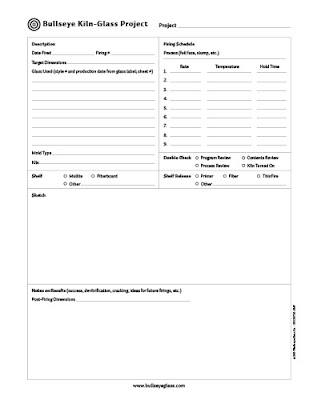I recently made a statement about the effects of various dam materials on the scheduling. This was based on my understanding of the density of three common refractory materials used in kilnforming – ceramic shelves, vermiculite board and fibre board. I decided to test these statements. I found I was wrong.
I set up a test of the heat gain and loss of the three materials. This was done without any glass involved to eliminate the influence of the glass on the behaviour of the dams. The dam materials were laid on the kiln shelf with thermocouples between. These were connected to a data logger to record the temperatures.
The schedule used was a slightly modified one for 6mm:
300°C/hr to 800°C for 10 minutes
Full to 482°C for 60 minutes
83°C to 427, no soak
150°C to 370°C, no soak
400°C to 100°C, end
The data retrieved from the data recording is shown by the
following graphs.
Highlights:
·
The dam materials all perform similarly.
·
This graph shows the dams have significant differences
from the air temperature – up to 190°C – during the first ramp of 300°C/hr. (in
this case).
·
There is the curious fall in the dams’ temperatures
during the anneal soak. This was
replicated in additional tests. I do not
currently know the reasons for this.
·
The dams remain cooler than the air temperature
until midway during the second cool when (in this kiln) the natural cooling
rate takes over.
·
From the second cool to the finish, the dams
remain hotter than the air temperature.
Some more information is given by looking at the temperature
differentials (ΔT) between the materials and the air. This graph is to assist in investigating how
significantly different the materials are.
This graph is initially confusing as positive numbers
indicate the temperature is cooler than the material being compared and hotter
with negative numbers.
As an assistance to relating the ΔT to the air temperature some relevant data points are given. The data points relate to the numbers running along the bottom of the graph.
Data Point Event
1 Start of anneal soak.
30 Start
of 1st cool (482°C)
45 Start
of 2nd cool (427°C)
65 Start
of final cool (370°C)
89 1st
55°C of final cool (315°C)
306 100°C
At the data points:
·
At the start of anneal soak the ΔT between the
dams is 16°C with the ceramic shelf temperature being 18°C hotter than the air.
·
At the end of the anneal soak of an hour, the
air temperature is 20°C higher, although the ΔT between the dams has reduced to
12°C.
·
At the end of the 1st cool the ΔT between
the dams has reduced to 9°C and the ΔT with the air is 3°C.
·
At approximately 450°C the air temperature
becomes less than the dams.
·
At 370°C the hottest dams are approximately 17°C
hotter than the air. The ΔT between the
dams is 10°C.
More generally:
·
The air temperature tends to be between 17°C hotter
and 17°C cooler than the ceramic dams during the anneal soak and cool. The difference gradually decreases to around
8°C at about 120°C.
·
Ceramic and fibre dams loose heat after
annealing at similar rates – generally having a ΔT between 4°C and 1°C, with a
peak difference of 9°C at the start of the second cool. This means the heat
retention characteristics of ceramic strips and fibre board are very close.
·
Between the annealing soak and about 300°C the
vermiculite is between 12°C and 9°C hotter than the same thickness of fibre. Vermiculite both gains and loses heat more slowly
than the ceramic or fibre dams do. This
means that vermiculite is the most heat retentive of the three materials.
Conclusions
·
Dams will have little effect during the heat up
of open face dammed glass. The slight
difference will be at the interface of the glass and the dams where there will
be a slight cooling effect on the glass.
Therefore, a slightly longer top soak or a slightly higher top
temperature may be useful.
·
The continued fall in the dams’ temperature
during the anneal soak indicates that this soak should be extended to ensure
heat is not being drained from the glass by the dams to give unequal
temperatures across the glass with the risk of inadequate annealing. I suggest
the soak should be extended to that for glass of 6mm thicker than actual to
account for this.
·
The ability of ceramic and fibre dams to absorb
and dissipate heat more quickly indicates that they are better materials for
dams than vermiculite board. The
slightly better retention of heat at the annealing soak, indicates that ceramic
is a good choice when annealing is critical.
Based on these observations, I have come to some conclusions
about the effect of dams on scheduling.
·
There is no significant effect
caused by dams during the heat up, so scheduling of the heat up can be as
for the thickness of the glass.
·
The lag in temperature rise by the dams indicates a slightly
longer soak at the top temperature (with a minor risk of devitrification), or a
higher temperature of, say 10°C can be used.
·
The (strange) continued cooling of the dams during
the annealing soak indicates that extending the soak time to that for a piece
6mm thicker than actual is advisable.
·
The cool rates can continue to be as for the
actual thickness, as the dam temperatures follow the air temperature with
little deviation below the end of the first cool.
·
Ceramic dams perform the best of the three
tested materials.
















